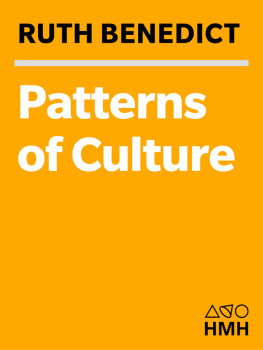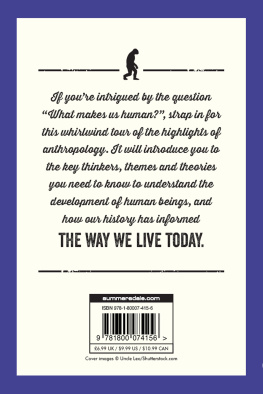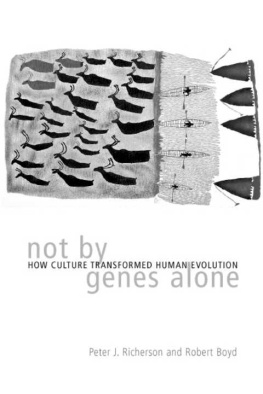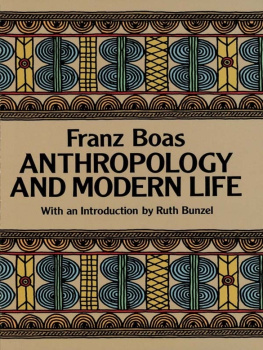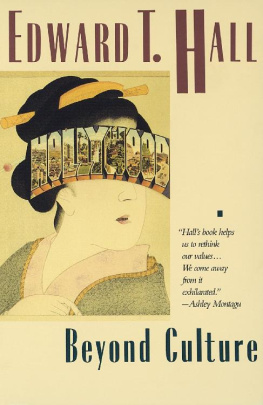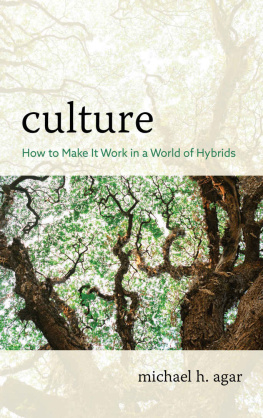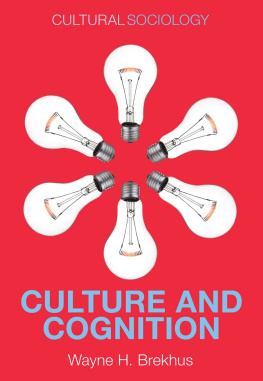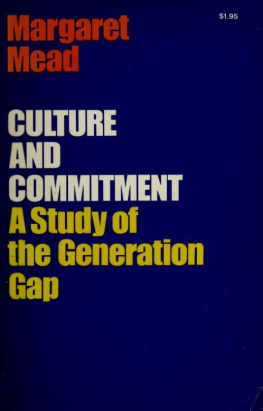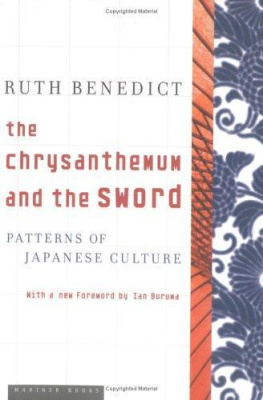First Mariner Books edition 2005
Copyright 1934 by Ruth Benedict
Copyright renewed 1961 by Ruth Valentine
Preface copyright 1959 by Margaret Mead
Foreword copyright 2005 by Louise Lamphere
ALL RIGHTS RESERVED
For information about permission to reproduce selections from this book, write to Permissions, Houghton Mifflin Harcourt Publishing Company, 215 Park Avenue South, New York, New York 10003.
www.hmhbooks.com
The Library of Congress has cataloged the print edition as follows:
Benedict, Ruth, 1887-1948
Patterns of culture / by Ruth Benedict; with a foreword by Louise Lamphere and a preface by Margaret Mead.
p. cm.
Includes index.
ISBN -13: 978-0-618-61955-9 (pbk.)
ISBN -10: 0-618-61955-0 (pbk.)
1. Culture. 2. Psychological anthropology. 3. Zui Indians. 4. Kwakiutl Indians. 5. EthnologyPapua New GuineaDobu Island. 6. Dobu Island (Papua New Guinea)Social Life and Customs.
I. Title.
GN 506. B 46 1989 89-7428
306dc20 CIP
e ISBN 978-0-547-52392-7
v3.0513
In the beginning God gave to every people a cup of clay, and from this cup they drank their life.
Proverb of Digger Indians
Foreword to the Mariner Books Edition
Patterns of Culture was the first anthropology book I read, and it inspired me to become a cultural anthropologist and college teacher. More than forty-five years ago, when I was a young white college sophomore spending the summer in the Colorado Rockies not far from my home in Denver, Benedicts poetic evocation of non-Western cultures invited me into a discipline that valued cultural difference and called for a vision of humanity that celebrated the broad spectrum of human behavior and the varied repertoire of cultures across the world. I had recently been steeped in a course on Western civilization at Stanford University, and this book presented several completely different ways of looking at the world. Even though the Zui lived in New Mexico, only about four hundred miles from my hometown, at the time I new little about their complex ceremonial life and philosophy. I was even more unfamiliar with the Kwakiutl and the Dobu, the two other peoples Benedict describes in the book. The literary quality of her descriptions and the poetic images she called forth gave each culture a complexity and a positive value that opened up other ways of thinking that were very different from my own experience.
Ruth Benedict was the age of my grandmother, but her book still has something to say to my childs generation and that of his children. In the globalized world of the twenty-first century, we Americans are much more likely to encounter difference on the street, in the subway, at a restaurant, in the classroom, or at the workplace. The telephone and the Internet put us in touch with individuals, organizations, and cultures across the globe. In my classes at the University of New Mexico, Navajo and Zui students are mixed with Anglo-Americans and Hispanos, but also children of immigrants from Iran, Nepal, Vietnam, or Colombia. Though students are often shy about revealing their personal situations, class discussions help students appreciate the persistence of Zui culture, the role of arranged marriage in the life of a young woman from Nepal, or the strategies a single Anglo mother uses to combine child rearing with full-time employment. As we increasingly encounter peoples of different cultures, it is ever more important to have a basis for understanding them. Patterns of Culture offers such a framework.
One of the most enduring metaphors used by Benedict in Patterns of Culture is that of a great arc across which range the possible interests provided by the environment, the age cycle, and human activities. Each culture selects from that arc of possibilities, choosing to emphasize one or several, giving that culture its particular pattern. As Benedict says, Its identity as a culture depends upon the selection of some segments of this arc.... Each from the point of view of another ignores fundamentals and exploits irrelevancies. Benedicts contribution was not only to present us with the portions of the arc selected by three culturesthe Zui, the Dobu, and the Kwakiutlbut to help us, her readers, to value all portions of the arc itself, and to see how each selection could be understood on its own terms. The point was to value, not to judge. She rejected the view that Western society was the best, the most evolved, and asserted that each culture must be seen as it sees itself. These are the tenets of cultural relativism, a much-needed approach even in a world where we have adopted a nonrelativistic code , of universal human rights and seek to protect the rights of women and children everywhere.
Today, it is important to read Patterns of Culture through a double lens, first as a historical document written during the 1930s, before World War II, the atomic bomb, the United Nations, air travel, and television. As such, the book shaped anthropology, popularized the term culture, and led Western readers to an appreciation of other ways of life. Second, Patterns of Culture is a text that still has relevance to the contemporary American scene. It foreshadows recent approaches to cultural description in anthropology that borrow heavily from literary traditions, and it calls attention to cultural diversity as much as issues of cultural integration. Deeply embedded in Benedicts analysis of other cultures is a critique of American societyfor example, its inability to view other cultures as unique, its reluctance to accept homosexuality, its rejection of trance or shamanistic practice as legitimate forms of healing, or its blindness to extreme behaviors in its own history.
Benedict is usually viewed as a founder of the Culture and Personality approach to anthropology that flourished in the 1930s and 1940s. After World War II, when this tendency was replaced, her work was often criticized for overemphasizing cultural wholes and cultural integration rather than focusing on sources of variability, conflict, and tension. In recent years, though, scholars have seen other tendencies in Benedicts work, many that seem to be forerunners of current ways of interpreting cultural materials. Benedict anticipated the ways in which some anthropologists now stress the symbolic, metaphorical, and semiotic aspects of culture, much as literary critics analyze novels, plays, or poetry. Embedded in the more global descriptions of the Zui and the Kwakiutl is Benedicts careful attention to detail and to the routines of daily life. Her work thus resonates with contemporary emphasis on individual agency and what anthropologists call practice: the ordinary daily actions and the extraordinary ceremonial performances that both produce and express the larger cultural patterns that Benedict evoked in each of her case studies.
Benedict felt herself to be an outsider within her own culture. She was especially attuned to the role of the deviant, the individual who does not fit into the dominant cultural pattern. She argued for a relativist notion of deviance. Using the example of homosexuality, she suggested that, although in Western cultures homosexuality was regarded as a perversion, in other culturesfor example, in ancient Greece and among the Pueblo of the Southwestit had a valued place. As part of the recent reappraisal, feminist and lesbian and gay anthropologists have claimed Ruth Benedict as a foremother.
Benedicts feminism stemmed from her early struggles to find a profession and then to earn a central place within it. Her position as a woman blocked some avenues in anthropology, despite the popularity of her books and her respected position as a theorist. She was denied the position of chair of the Columbia Anthropology Department and was promoted to full professor only six months before her death in 1948. She was, however, a tenured member of a major department, taught students in the next generation of anthropologists, and was elected president of the American Anthropological Association in 1947. Among all the women of her generation, she was the most central to the discipline.
Next page
